Samsung Galaxy S 2 (International) Review - The Best, Redefined
by Brian Klug & Anand Lal Shimpi on September 11, 2011 11:06 AM EST- Posted in
- Smartphones
- Samsung
- Galaxy S II
- Exynos
- Mobile
Software
Before we go much further, I think it’s important to go over all of the software running on the international version of the SGS2 we’ve been loaned. I’ve made explicit mention of the fact that we were loaned this device because as a result it makes testing things with custom and leaked ROMs somewhat interesting. For the most part, carriers and OEMs don’t care as long as everything makes it back to them in exactly the same state they were shipped out, but it’s always a grey area. For that reason, I’ve been testing and using the device exclusively with the latest ROM for the phone as shown in Samsung Kies. As of this writing, that’s still Android 2.3.3 and firmware XWKF3. I realize there’s a leaked ROM which is 2.3.4, however we’ve opted to just go with official at this point.
The original SGS1 started Samsung’s trend of adding UI skins to high-end devices, and drew a firestorm of criticism from critics all over. Thankfully it seems as though Samsung has heard those complaints and has lightened things up considerably this go-around with TouchWiz 4.0 which runs on the SGS2. Where TouchWiz 3.0 (from SGS1) looked like a strange attempt at making Android 2.1 and 2.2 look like iOS, TouchWiz 4.0 is a much cleaner, less claustrophobic, and considerably less garish experience.
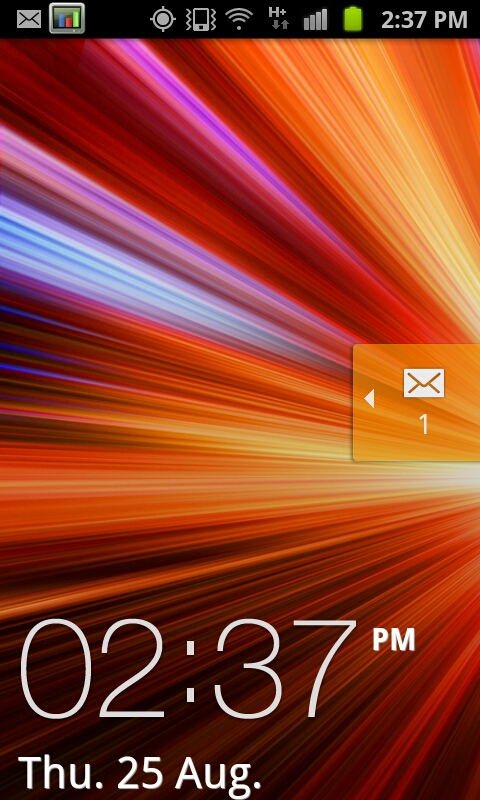
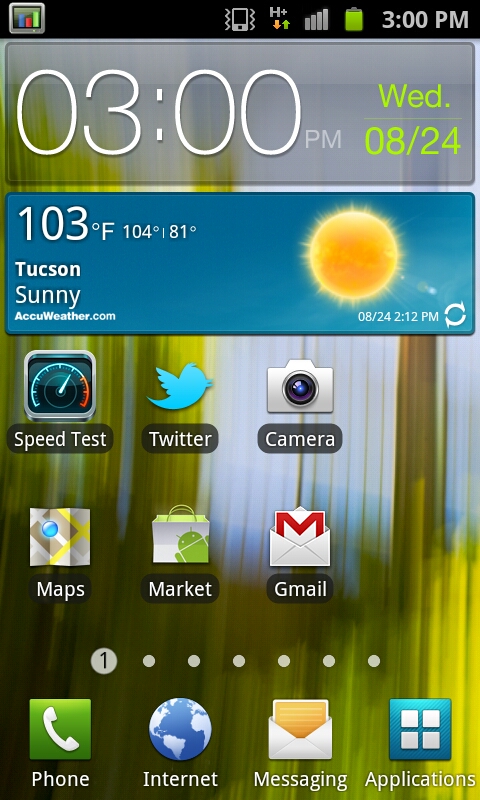
Starting with the lock screen, TouchWiz 4.0 continues the tradition of changing things here. Unlocking is achieved by moving the large graphic and clock off the screen, unless of course you’ve defined a custom lock pattern or PIN. Alerts such as new SMSes can be handled by sliding the notification ribbon across the screen. Of course this background is customizable and discrete from the main background as well. There’s really not much to say about this beyond that I’m still surprised TouchWiz didn’t take a nod from HTC’s Sense 3.0 and add shortcut functionality into this menu.


The main application launcher and home screens are what make or break a skin, and here I think there’s more positive than negative with TouchWiz 4.0. To start, home screen one is the far left, not the center. Switching between these is accomplished either by swiping back and forth or dragging on the dots at the bottom. This animation is extremely fluid - I get the impression that the entire TouchWiz 4.0 experience does leverage the GPU for composition and as a result feels very speedy.
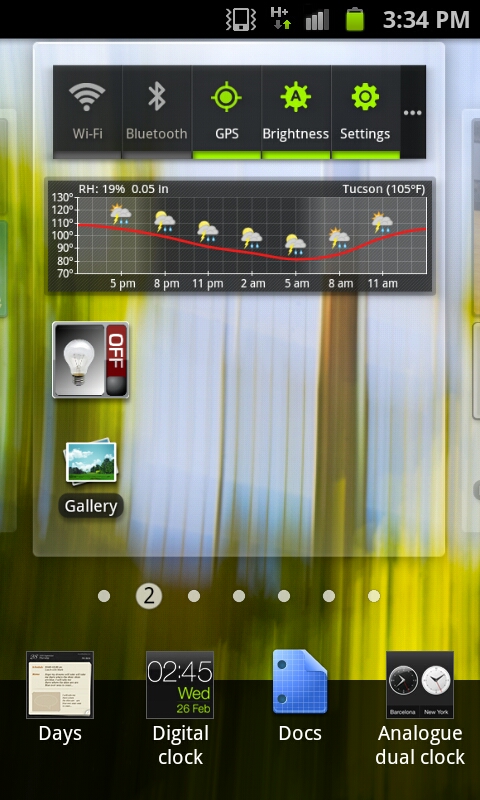
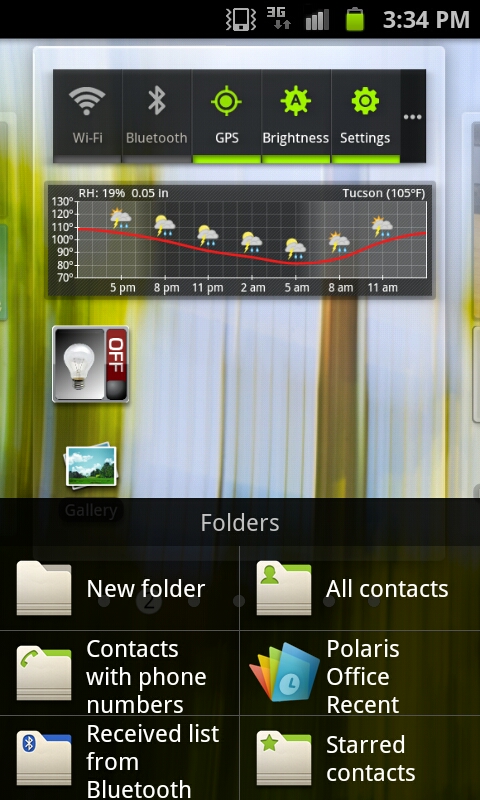
There’s a contextual menu as well where new widgets, shortcuts, and folders can be added. In fact, most of the home screen customization takes a similar - screen on top, menu on bottom - approach, which makes a lot more sense than stock Android’s popup bubble schema. Tapping widgets gives you a long list of available widgets which tilt as you scroll through them. Just like other UI skins, there’s an assortment of skin-specific widgets that support resizing.
For the most part, I find that TouchWiz 4.0 moves away from the social-hub augmented with weird widgets motif set by the last generation of UI skins. That’s definitely a good thing, because most of the time that last generation failed to really deliver social experiences that came close to true first-party experiences.
TouchWiz 4.0 does still keep the bottom row of applications which is another throwback to iOS, and like other skins puts the application launcher shortcut in the far right.
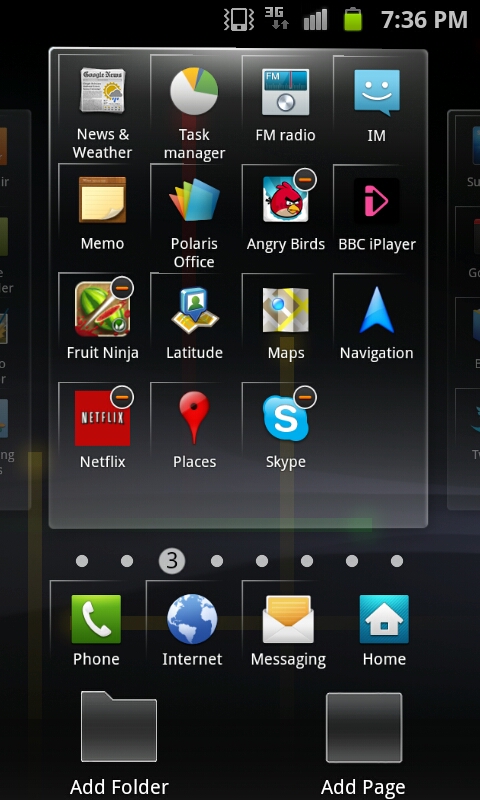

By default the applications launcher presents icons in a 4x4 paginated layout, though you can toggle a list view as well and just scroll up and down. Menu edit brings you to a view just like the home screen customization page, where you can move icons around and also change the bottom row of shortcuts. There’s also folder support for organization. One major plus is that icons no longer have the chicklet-like background colors that made everything square and applications difficult to identify quickly. Thankfully, that’s gone, and the result feels far less tacky than the previous iteration.
Just like the home screen, you can change between pages of applications by tapping on the page number dot, or scroll back and forth quickly by sliding along the bar. This results in the same animated sliding view that the homescreen shows. I guess that’s one positive thing this go-around with TouchWiz, if anything you can’t criticize it for being inconsistent. For the most part honestly the launcher and homescreen TouchWiz components are pretty tolerable.

Just like in the past, the notifications shade drop down includes toggles for WiFi, Bluetooth, GPS, Sound, and Auto Rotate. It all works just like you’d expect it to. One small thing here is that if you’re in manual brightness mode, press and holding on the notifications bar and dragging left or right will change brightness along the scale. It’s a quick way to get analog control over brightness if you’re in manual setting mode.


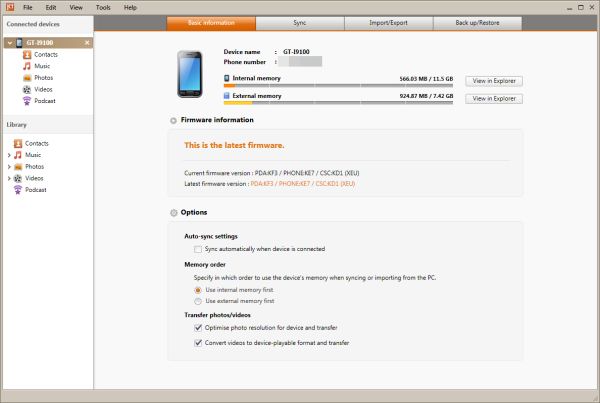








132 Comments
View All Comments
jcompagner - Monday, September 12, 2011 - link
When i am already using it for months and months now, and i am already thinking maybe next month or 2 i will replace it with its successor the Nexus Prime or what ever it may be called...Again here the complains about no updates.
What are you people complaining about, please...
Samsung releases, yes not officially but they are real samsung releases, quite often roms
for example here are the SGS2 once's:
http://www.samfirmware.com/WEBPROTECT-i9100.htm
A few releases per month, i am now on the latest one (2.3.4 of August 12)
If you look there to other phones you also will see many updates of all the latest phones of samsung.
So it is very easy and you dont need to root if you don't want to, just flash these roms. and you have a updated samsung made rom. (but yes 'leaked')
Reikon - Monday, September 12, 2011 - link
"Vellamo produces its scores directly from frame counters, so what you're looking at is a direct representation of how fast these devices scroll through the three web tests above. The Galaxy S II is 20 - 35% faster than the Photon 4G and 45 - 100% faster than the EVO 3D."You mixed up Photon 4G and EVO 3D, either in the table or the comment under it. The data shows the SGS2 20-35% faster than the EVO 3D and 45-100% faster than the Photon 4G.
Stormkroe - Saturday, September 17, 2011 - link
I thought I was the only one noticing this too. I'm also concerned with the adreno missing from the 2.1 off screen render tests, as well as pointing out that it would definitely be beating the S2 in GL 2.0 Pro if resolutions were normalized there. Feels like the whole thing was meant to really set the mali on a high horse. Don't get me wrong, I think it's great, just not "double the speed of the competition" when you throw the entire lineup in the mix.poohbear - Tuesday, September 13, 2011 - link
Nice to read this review finally, it is indeed an awesome piece of hardware. Im not even sure the iphone 5 will be able to compete? guess we'll find out next month!PWRuser - Tuesday, September 13, 2011 - link
Is the SGS2 memory the newer 30nm LPDDR2 1066 or the 800 one found in older phones?QWIKSTRIKE - Tuesday, September 13, 2011 - link
When will you do a Sprint review with CDMA antenna signal repsonsivenessOlrac - Tuesday, September 13, 2011 - link
Just for those who would like to know I am running The galaxy s2 overclocked to 1.6Ghz and its rock steady no crashes or freezes does not even get much warmerLinpack Single Threaded = 74 average and Multithreaded = 114
Revolution rom with ninphetamine 2.1.3 kernel
lamecake - Wednesday, September 14, 2011 - link
Just for comparision.. I have a HTC Sensation clocked at 1.6ghz with a Sense based rom. It's actually perfectly stable to 1.78ghz here but 1.6 should be no problem for any sensation.Linpack Single Threaded = 58 average and Multithreaded = 95
Pyramid3D 7.4.0 with faux123 0.1.4 kernel.
CM based roms just popping up, so anxious to see how a non-sense rom compares to the SGS2.
Pessimism - Tuesday, September 13, 2011 - link
is not a coin cell battery. it is a supercapacitor, sort of a cross between a capacitor and a battery, they use them as a buffer between the phone and batterylchen66666 - Tuesday, September 13, 2011 - link
Rumors of iPhone5 indicate that iPhone5 will have the iPhone4 form. If this is realy, that would quite disappoint me. I will definitely consider GSS2 when I upgrade my old iPhone3GS. I was hoping iPhone5 comes with 4"+720P display+some other improvement(new camera chip, new design of antenna, and new CPU). 4" seems to be the sweet spot to be the smart phone(not too big, and not too small). If Apple doesn't have much improvement in the display. The faster CPU is not that useful.The review is very detail. Not very happy with a couple of things on GSS2. Resolution is not high enough for a 4.3" display. Audio quality is not good. Seems like GSS2 has very good camera chip for video and photo. Really like it. From your other review, I got impression that Super ALMOD plus display is much better than IPS. From this review, seems like SALMODE+ is similar to SIPS display used on other smart phones. I haven't seen Samsung SALMODE+ display in person.